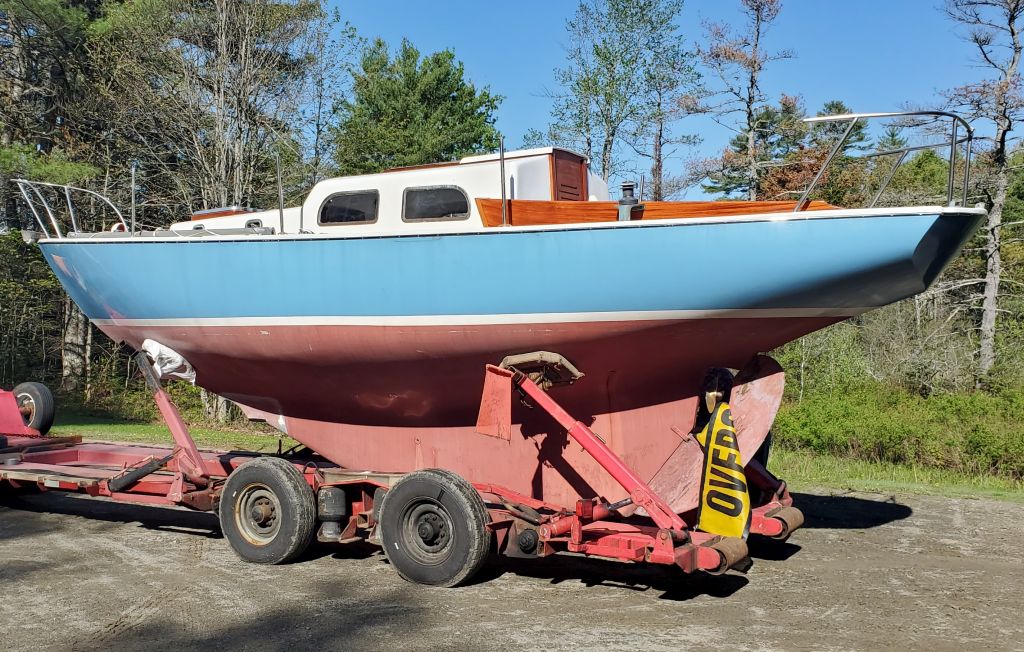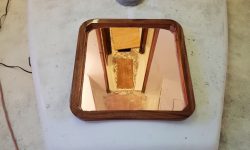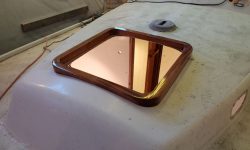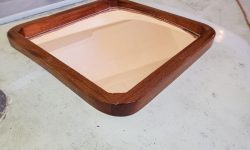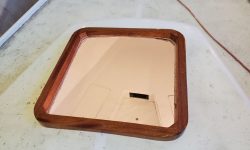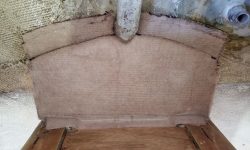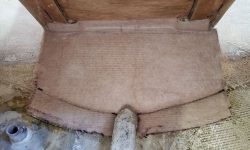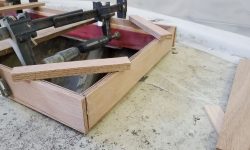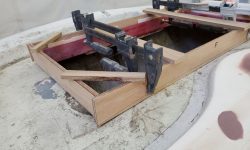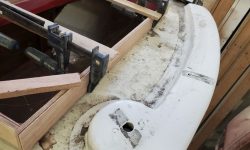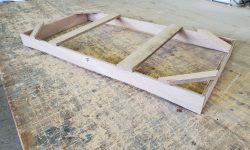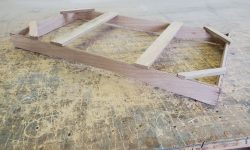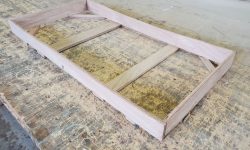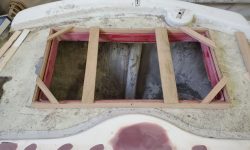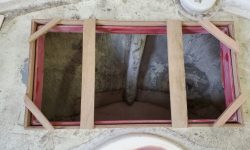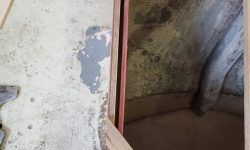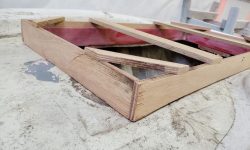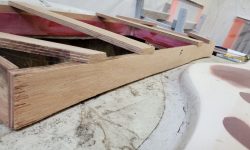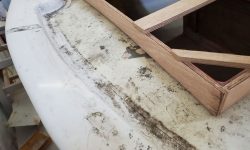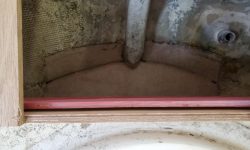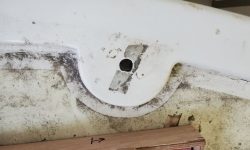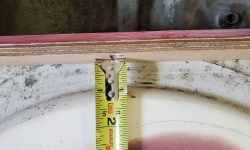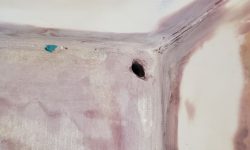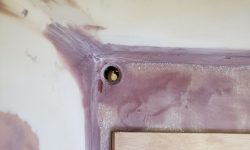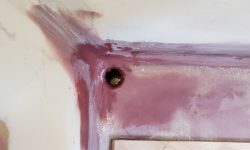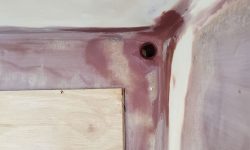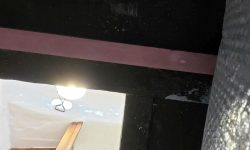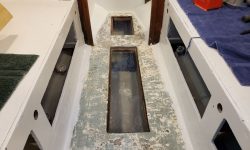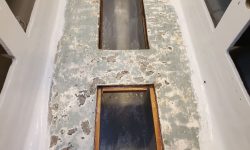February 25, 2021
Lyra 26
Thursday
Having cured overnight, the forward hatch frame was ready for unclamping. I’d soon install the new hatch to complete this task.
Following some light prep work in the generator compartment, I cut two layers of heavy fiberglass to sheathe and tab in the shelf, then installed them in epoxy resin. The new fiberglass overlapped the hull at the aft end by several inches, and wrapped up the back side of the cockpit well by a few inches as well.
The owner wanted to build the hatch for the new generator compartment, so I made up a simple plywood template I could give him that accurately portrayed the size of the coaming, and the shape of the surrounding deck. Using roughly 1/8″ thick stir sticks as spacers between the coaming and the inside of the template (representing the minimum inside dimensions of the hatch), I built the raw template in place from 2″ wide strips of 9mm (3/8″) plywood and hot glue, adding stiffeners as needed. Then, I scribed the shape of the deck on all sides.
Down on the bench, I cut the template to my scribe lines as needed, and trimmed the overhanging braces and ends of the box. I fine-tuned the shaping with a couple test-fits on deck to improve the fit after my initial cuts and shaping. I made some additional reference marks and measurements to highlight various clearances to nearby obstructions, such as the curvy part of the traveler area, and the stern light molding behind, which might affect portions of the build. Then, I marked the actual inside height of the coaming on the template as a final reference.
Looking to wrap up a few loose ends before I turned my full attention in the coming week to the cabin and the beginnings of systems installations–including scupper drain hoses, which, because of access issues, needed to be installed before the rest of the interior could be completed–I worked on the cockpit scuppers, which were still in rough form following the bulk cockpit work earlier. Now, I reopened the holes in the cockpit corners with a hole saw and beveled them with a countersink before adding a bit more epoxy fairing compound in the corners and around and inside the drain openings to fine-tune the appearance and function.
In the cabin, I added some screws through the cabin sole and into the new cleats in various places to strengthen the joints and, as needed, cleaned up some epoxy squeezeout here and there and otherwise prepared the sole and cleats for painting in the immediate future. The cabin sole itself, built from plywood with a fiberglass overlay, was in rather sketchy condition, the original plywood having lost much of its structural integrity over the years, and since it was generally just sound enough despite that (if far from good), and wholesale replacement wasn’t feasible at this time given the other more pressing needs of the project scope, I added some cross stiffeners below the sole in key points to help prevent flexing: Just some scrap pieces of prefab fiberglass that happened to fit beneath the sole and could be tightly wedged into position. With no real access beneath, these stopgaps would hopefully extend usefully the life of the existing sole for some modicum of time.
Total time billed on this job today: 5 hours
0600 Weather Observation: 40°, mostly clear. Forecast for the day: Sunny and windy, temperature dropping.


